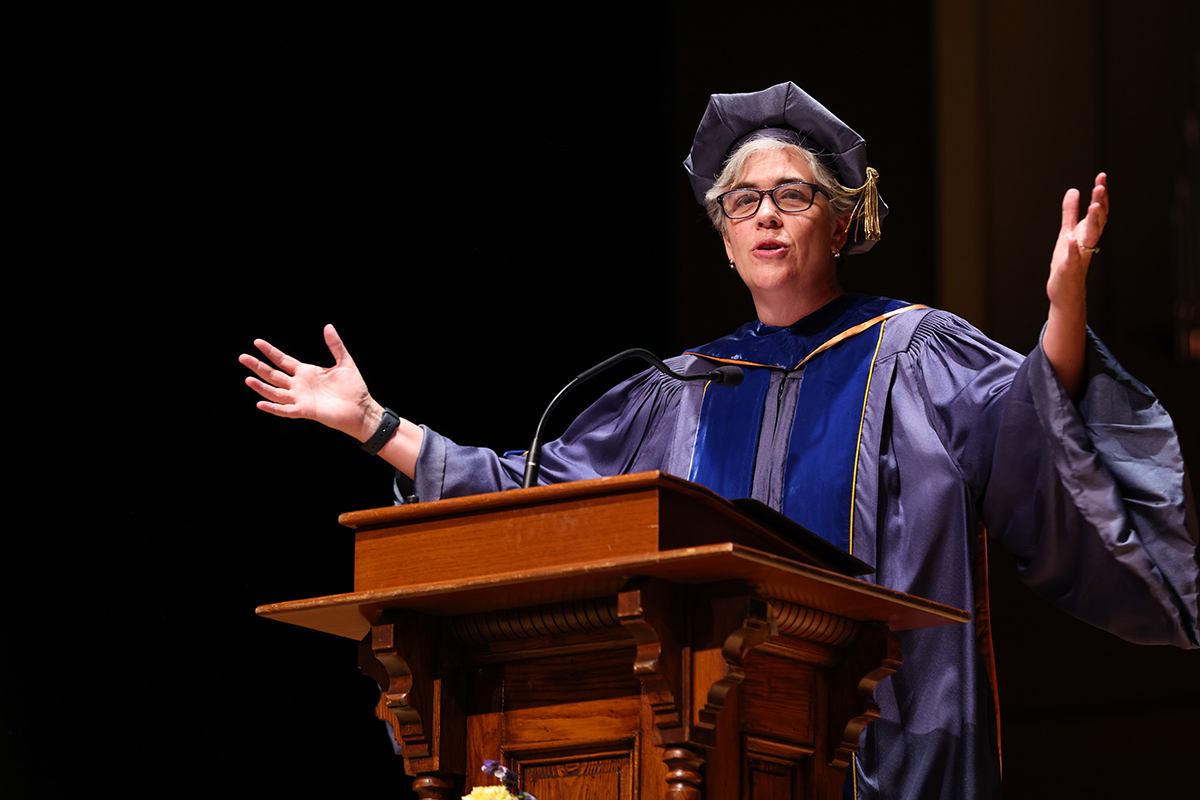Convocation

Whitman College’s annual Convocation ceremony is a calling together of everyone on campus—students, faculty and staff—to mark the beginning of the next academic cycle, and to welcome the incoming class of first-year students into our community.
More About Convocation
Academic regalia worn at collegiate ceremonies such as Convocation and Commencement serves two purposes: it lends dignity and color to such occasions and reveals types of academic achievement through different styles of gowns and hoods and varying colors.
The regalia you see today is based on what was worn at universities in the 14th and 15th centuries, especially at Oxford and Cambridge. Late 19th century changes included the assignment of specific colors to signify academic disciplines. Modern academic dress in the United States has remained essentially unchanged since 1895, when it was standardized by the Intercollegiate Code.
Differing styles of gowns represent bachelor’s, master’s and doctoral degrees. The bachelor’s gown has a long pointed sleeve, the master’s has a long closed sleeve with a slit for the arm at the elbow, and doctoral robes have full, bell-shaped sleeves with three velvet bands matching the velvet facing of the gown opening. The velvet on the doctoral gown can be colored to represent a specific discipline, and the gown itself can be black or a color chosen by the institution.
Hoods drape down the back of the gowns and are most commonly used to reflect master’s and doctoral degrees. They are lined in the official color of the institution which conferred the degree, with a chevron used for a second color if needed. The colored velvet binding indicates the academic area to which the degree pertains. For example, white for liberal arts, pink for music, yellow for science, purple for law, red for theology, green for medicine and blue for philosophy.
Caps, all with tassels, can be either the familiar square mortarboard or a rounded or multi-angular floppy style.
Cordiner Hall, a 1,400-seat concert auditorium, bears the name of the late Ralph Jarron Cordiner, a 1922 Whitman graduate who was president and CEO of the General Electric Company from 1950 to 1963. Cordiner Hall features a 3,000-pipe custom-built organ made by the Holtkamp Organ Company and a 9-foot Steinway Model D grand piano.